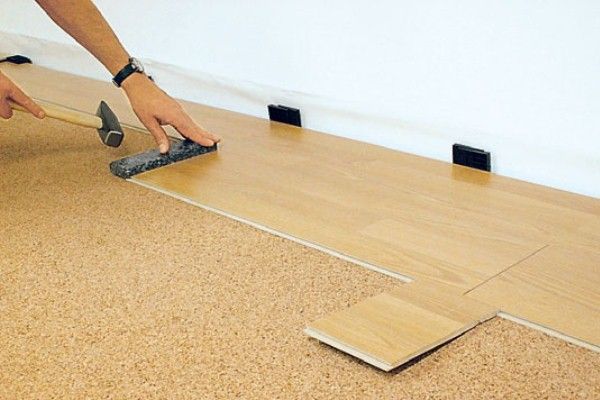Laminate width
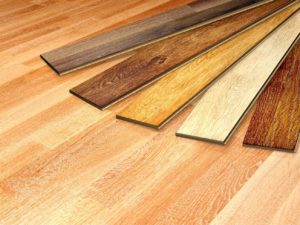 In conditions of excess supply in the building materials market, it is difficult to make a choice. It may take a lot of time to select a suitable floor covering, but you will still have to study in detail the characteristics of the selected material.
In conditions of excess supply in the building materials market, it is difficult to make a choice. It may take a lot of time to select a suitable floor covering, but you will still have to study in detail the characteristics of the selected material.
The most common choice is laminate - beautiful slats, often imitating natural wood. They are the best at bringing warm coziness to your home. In addition, this material is easy to maintain and install. But given that it is laid individually, it is important to study the parameters of the plates in advance and correctly calculate the amount of material required. Boards may vary in length, thickness, width, color. Let’s look at the question of the width of the laminate in more detail, telling you what width its slats are.
The content of the article
Width of standard laminate
The amount of laminate flooring required will depend on the area of the room. The accuracy of the calculation depends on the size of the lamellas, their length and width. To display a wood pattern, you can give preference to narrow slats, but to imitate a more complex pattern, wide plates are used.
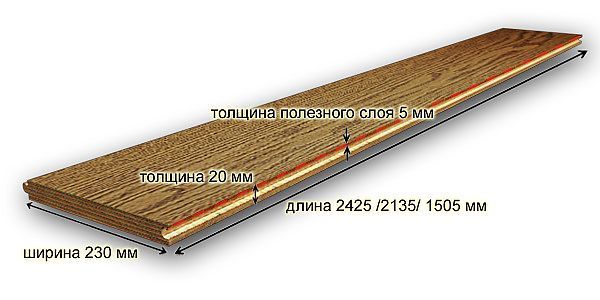
The width of the laminate belongs to one of four types.
- Narrow plates from 90 to 160 mm wide. With the help of such slats, you can easily lay the floor using a slatted method or imitate parquet laying.
- Medium width plates range in size from 160 to 195 mm. This is the most commonly used width. These slats are perfect for creating plank floors.
- Wide plates from 300 to 350 mm most often imitate tile laying.
- The lamellas can be as wide as possible up to 400 mm. Such models, as a rule, are found in designer designer collections and can “transmit” any design conceived by the developer.
IMPORTANT! When choosing the width, you need to focus on the shape of the room. Large, wide slats for rooms with non-standard sizes and shapes will force you to leave a lot of scraps, and the design itself may suffer.
Width of custom laminate
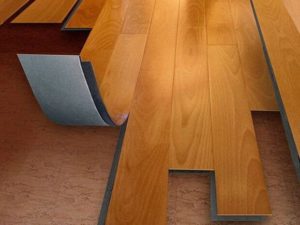
Almost every material has standard sizes and dimensions, but you always want to add something exclusive to ordinary things. It’s the same with laminate - in addition to the usual parameters of the lamellas, there are also non-standard ones.
- Designer laminate can be any width. Such plates are made to order, based on the developed layout. And the cutting of panels into component parts is carried out in accordance with the requirements of the designer.
- Flexible got its name due to the reduced thickness of the plate. On average, the width will vary within 300 mm, and there are no limits at all for the length.
- Waterproof lamellas have an impressive thickness - they contain several layers and impregnations. Such thick boards cannot have a modest width; usually it is at least 400 mm. The waterproof option is easier to install, gives the floor additional warmth and is very resistant to mechanical damage.
For non-standard types there are no exact parameter norms. As a rule, the manufacturer produces such collections in rather limited quantities, and each new collection may have different sizes.
How to choose laminate size
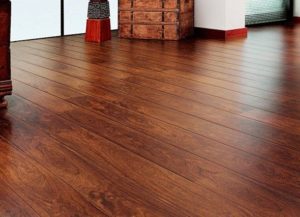
In addition to different widths, boards will differ in length, thickness, class, and material.
Tips for choosing
There is enough introductory information to quickly get a beginner confused. To make it easier to at least choose the size of the boards, here are a few tips.
- If installation will be carried out on your own, it is better to give preference to standard sizes. It will be easier to cope with installation and selection of designs.
- If the room has a heated floor system, the thickness of the lamellas should be at least average.
- When choosing non-standard sizes, you must follow the manufacturer's instructions, since installation and installation rules will differ from standard procedures.
- If the room has disproportionate shapes, a square laminate can “balance” it.
- For small rooms, it is better to choose long and narrow plates - they will visually elongate the room.
IMPORTANT! Thickness is an important indicator even for residential premises with low traffic.
Here, as a rule, there will be furniture that should not damage the coating, so it is better to choose a thickness of 8–10 mm.
Calculation rules
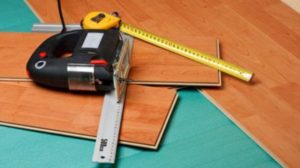
In addition to recommendations for choosing a size, it is worth learning the general rules for selecting and calculating laminate flooring.
- For the direct installation method, you need to lay 7% of additional material from the total area of the room.
- If diagonal laying is planned, the volume of the required laminate needs to be increased by 10% of the area of the room.
- In rooms of non-standard, complex shapes, it is better to create a drawing of the future installation in advance - this will make it easier to calculate the required volume of material;
- High-quality laminate has a warranty period of 15 years; it is worth finding this information from the manufacturer.
- It is better if the selected lamellas have a protective layer. This way the panels will transfer moisture more steadily.
- It is always better to have the laminate left after installation than to have to look for the same shade when there are not enough panels.
- Color and installation method can easily transform a room: add light to it, visually change its size, give it charm.
Laminate flooring can be used in both home and commercial spaces. The thickness of the lamellas depends on the expected level of wear and traffic, and the length and width are often selected to suit the geometry of the room and personal preferences.




